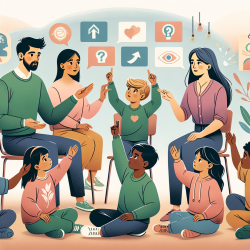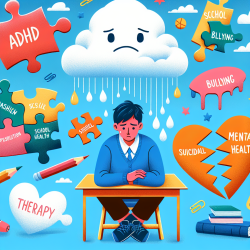As a practitioner dedicated to improving the lives of children, it is crucial to stay informed about the latest research and its implications for practice. One such significant study is "School behaviour and health status after central nervous system tumours in childhood" by Glaser et al. (1997). This research provides valuable insights into the long-term effects of childhood central nervous system (CNS) tumours on school behaviour and overall health status. In this blog, we will discuss how practitioners can implement the outcomes of this research to enhance their practice and support children more effectively.
Understanding the Study
The study by Glaser et al. (1997) aimed to assess the overall morbidity burden of survival from CNS tumours and its impact on the return to a normal lifestyle. The researchers evaluated the school behaviour and health status of 27 children who had been treated for CNS tumours, 25 of their school-aged siblings, and age- and sex-matched controls. The assessments included the Spinetta school behaviour, Lansky play-performance, and Health Utilities Index (mark II and III).
Key Findings
The study revealed several important findings:
- Children treated for CNS tumours exhibited reduced mobility and increased pain levels.
- They demonstrated a reluctance to participate in organized physical activities.
- Impaired cognition, emotion, and self-esteem were reported among the patients.
- These children worried more than controls but attended school willingly, interacted normally with peers, and viewed the future confidently.
- Siblings of these children were reluctant to express concern for others or feelings of joy openly.
- Teachers were reliable proxies for most attributes, except for speech and emotion.
Implications for Practitioners
Based on these findings, practitioners can take several steps to improve their skills and support children who have survived CNS tumours:
1. Address Physical Limitations
Given the reduced mobility and increased pain levels reported in the study, practitioners should incorporate physical therapy and pain management strategies into their treatment plans. This may include:
- Collaborating with physical therapists to design individualized exercise programs.
- Implementing pain management techniques such as relaxation exercises, mindfulness, and appropriate use of medications.
2. Encourage Participation in Physical Activities
To counteract the reluctance to participate in organized physical activities, practitioners can:
- Create a supportive environment that encourages gradual involvement in physical activities.
- Offer alternative physical activities that are less strenuous but still enjoyable.
- Involve peers to foster a sense of community and support.
3. Support Cognitive and Emotional Development
The study highlights the need for cognitive and emotional support. Practitioners can:
- Implement cognitive rehabilitation programs to address cognitive impairments.
- Provide counseling and emotional support to help children build self-esteem and manage anxiety.
- Encourage open communication between children, their families, and educators to create a supportive network.
4. Educate and Involve Teachers
Teachers play a crucial role in the social reintegration of these children. Practitioners should:
- Provide training and resources to teachers to help them understand the unique needs of children who have survived CNS tumours.
- Encourage teachers to monitor and support speech and emotional development actively.
- Foster collaboration between teachers, parents, and healthcare providers to ensure a cohesive support system.
Encouraging Further Research
While the study by Glaser et al. (1997) provides valuable insights, there is always room for further research. Practitioners are encouraged to stay updated on the latest studies and consider conducting their research to contribute to the field. Some potential areas for further research include:
- Longitudinal studies to track the long-term outcomes of children who have survived CNS tumours.
- Exploring the effectiveness of different intervention strategies in improving physical, cognitive, and emotional outcomes.
- Investigating the impact of family dynamics and support systems on the well-being of these children.
Conclusion
The research by Glaser et al. (1997) underscores the importance of a multidisciplinary approach in supporting children who have survived CNS tumours. By addressing physical limitations, encouraging participation in physical activities, supporting cognitive and emotional development, and involving teachers, practitioners can significantly enhance the quality of life for these children. Staying informed about the latest research and continually seeking to improve one's practice are essential steps in achieving this goal.
To read the original research paper, please follow this link: School behaviour and health status after central nervous system tumours in childhood.










